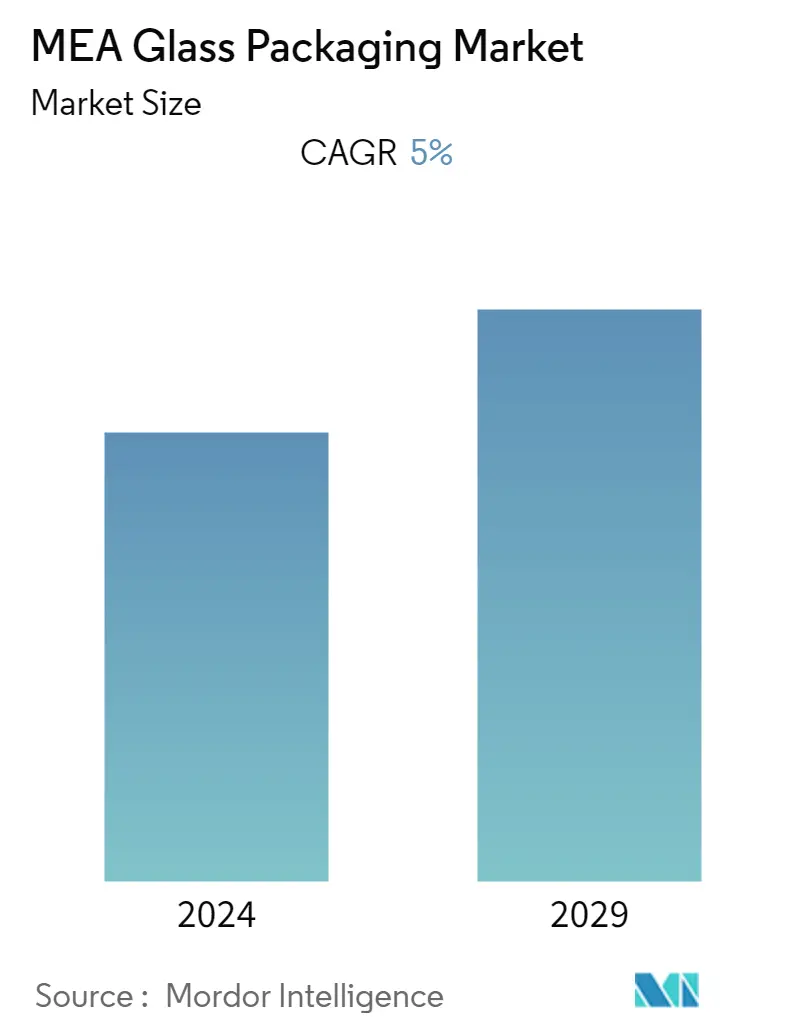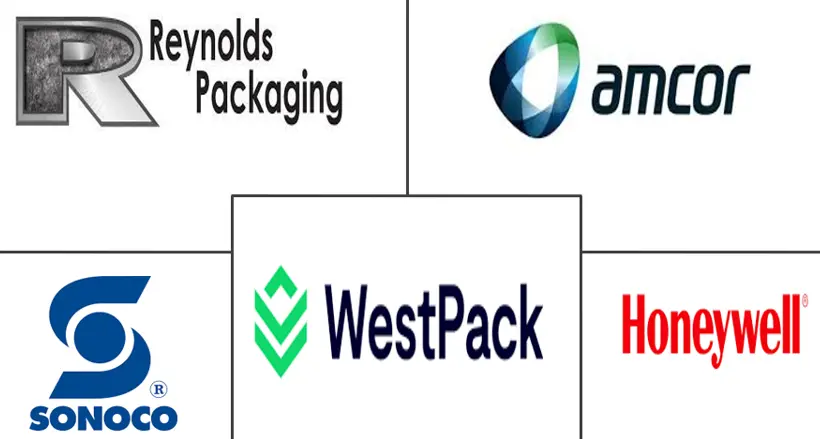Market Size of MEA Glass Packaging Industry

| Study Period | 2019 - 2029 |
| Base Year For Estimation | 2023 |
| Forecast Data Period | 2024 - 2029 |
| Historical Data Period | 2019 - 2022 |
| CAGR | 5.00 % |
| Market Concentration | Medium |
Major Players
*Disclaimer: Major Players sorted in no particular order |
Need a report that reflects how COVID-19 has impacted this market and its growth?
MEA Glass Packaging Market Analysis
The Middle-East and African glass packaging market is expected to register a CAGR of 5% over the forecast period, 2021-2026. The impact of COVID-19 on glass had an indirect link as an essential business and was allowed to function.The Ethiopian glass container manufacturer, Addis Ababa Glass and Bottle Share Company, overlooks the capacity expansions. Amidst the COVID-19 pandemic, South Africa took stringent measures like halting all alcohol production.
- An increasing trend of transparency in food packaging over the past few years has been observed. This puts growing preference for glass as a material for packaging, being least opaque. Water is an emerging segment aligned with an increasing need for transparent glass containers with minimalist labeling. Multiple brands across the Middle Eastern region have depicted transitioning to glass to package water. For instance, in April 2021, Earth Water launched its natural mineral water lineup in glass bottles across the UAE. PepsiCo launched Aquafina water in Expo 2020 Dubai-cobranded as fully recyclable glass bottles to promote sustainable packaging.
- In March 2021, a new factory in Abu Dhabi planned to manufacture a COVID-19 vaccine from Chinese pharmaceutical giant Sinopharm under a joint venture between Sinopharm and Abu Dhabi-based technology company Group 42 (G42). The plant, built in the Khalifa Industrial Zone of Abu Dhabi (KIZAD), was planned to produce 200 million doses a year with three filling lines and five automated packaging lines. Similar expansion trends and investments are expected to demand glass packaging solutions in the regional pharmaceutical industry significantly.
- The policies against plastic for packaging are also creating new opportunities for the glass bottles and containers market. In February 2021, Kenya signed the Clean Seas Initiative and became one of the first countries in East Africa to limit single-use plastics. Also, as of June 2020, visitors to Kenya's national parks, beaches, forests, and conservation areas can no longer carry plastic water bottles, cups, disposable plates, cutlery, or straws into protected areas.
- According to International Finance Corporation (IFC), officials are considering promoting more local production from private pharma companies that produce generic medications and companies that manufacture active pharmaceutical ingredients or APIs (the primary components in manufacturing drugs). Ethiopia's National Strategy and Plan of Action for Pharmaceutical Manufacturing Development (2015-2025) also catalyzes pharmaceutical production at the country level.
